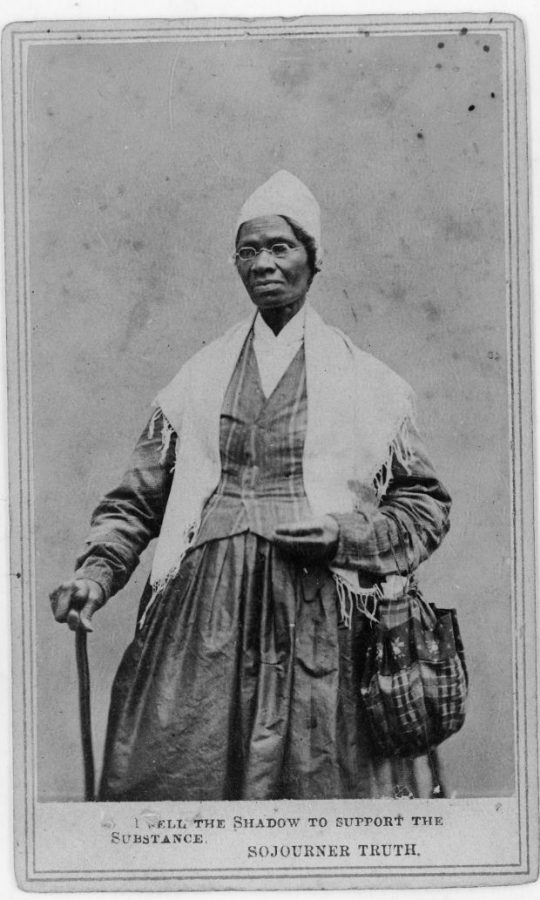‘Ain’t I a Woman?’
Sojourner Truth, originally named Isabella Baumfree, was born, as near as she could calculate, between the years 1797 and 1800. She was a former slave, abolitionist and women’s rights advocate.
She is best known for her extemporaneous speech on racial inequality, “Ain’t I a Woman?”, delivered at the Ohio Women’s Rights Convention in 1851.
She was bought and sold four times, spending the first 29 years of her life as a slave in New York performing demanding physical labor.
In about 1815, Sojourner fell in love with a slave from a neighboring farm, named Robert. They had a daughter, Diana. Robert’s owner forbade the relationship, as any subsequent children produced by the union would be the property of John Dumont, Sojourners owner, rather than himself. Robert and Sojourner Truth never saw each other again.
Several years later, Dumont compelled Truth to marry an older slave named Thomas. Their marriage produced several children, including a son, Peter, and two daughters, Elizabeth and Sophia.
According to a law that was passed in 1817, Sojourner should have become free when she reached age 25. By the time she was 29, however, she was no closer to her freedom.
So in 1827, she ran away with her infant daughter to the home of a neighboring abolitionist family. The family help buy Truth’s freedom from her master for $20. With the family’s help, Sojourner sued for the return of her 5-year-old son who had been sold illegally in Alabama.
She had a spiritual breakthrough in 1843 and declared that the Spirit called on her to preach the truth and gave her a new name, Sojourner Truth.
In 1850, after never being able to learn to read or write, with the help of a friend she published her life story and beliefs in The Narrative of Sojourner Truth. She made her home in Battle Creek, MI, where three of her daughters lived.
Sojourner was active in the Underground Railroad, helping blacks escape to freedom. She also met with Abraham Lincoln to thank him for helping to end slavery.
After decades of lecturing across the country, nearly blind and deaf, Sojourner spent the last few years of her life in Michigan with her family.
She died in Battle Creek, MI on Nov. 26, 1883.
Harriet Beecher Stowe, author of Uncle Tom’s Cabin, attested to Sojourner’s personal magnetism, saying that she had never “been conversant with anyone who had more of that silent and subtle power which we call personal presence than this woman.”


